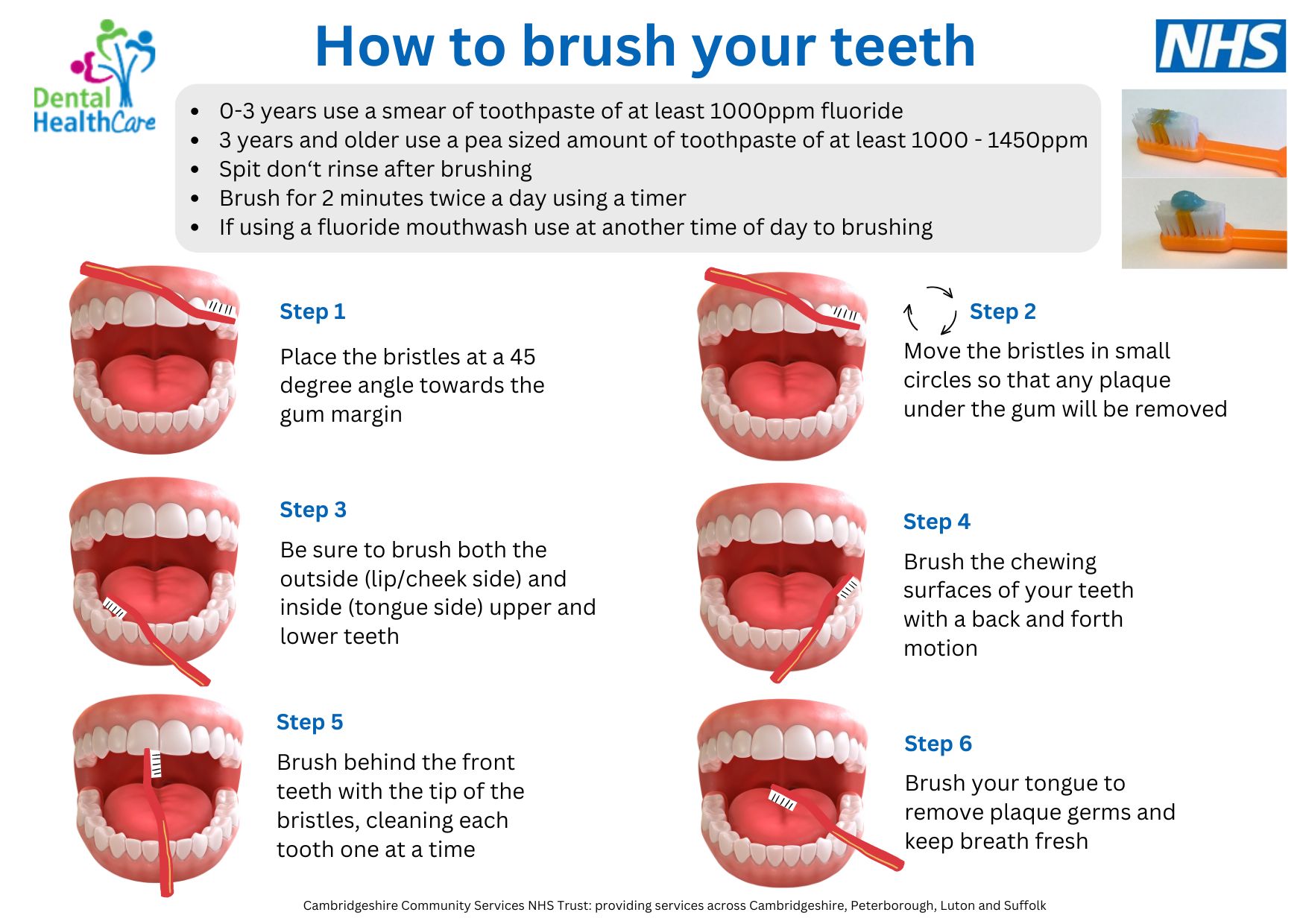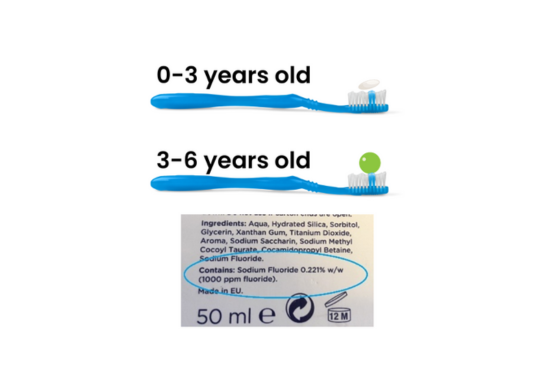Tips for brushing teeth
- Brush together, make it a joint activity and use lots of praise!
- If your child likes to chomp on toothbrushes, give them one to chew on while you can use another to clean their teeth and gums!
- You don't have to be at the the sink to brush your teeth! You can sit on the end of a bed/ or chair, spitting out into a cup or a paper towel- the aim is to get teeth brushed!
- Don't worry if you only get a limited time to brush your child's teeth, start by brushing the ones you missed last time! Brushed is best!
- It is recommended not to rinse your mouth out with water after brushing
- If the toothbrush is looking flat and the bristles are splayed- replace it!
Other things to remember
- Milk and plain tap water are the only tooth friendly cold drinks for small children
- Drinking juice or squash in a bottle is not good for teeth
- Drinking out of an open top is best for children. Did you know these can be used from the age of 6 months!
-
Dried fruit like raisins are not good for teeth, try and keep these to a meal time instead of snack time!








